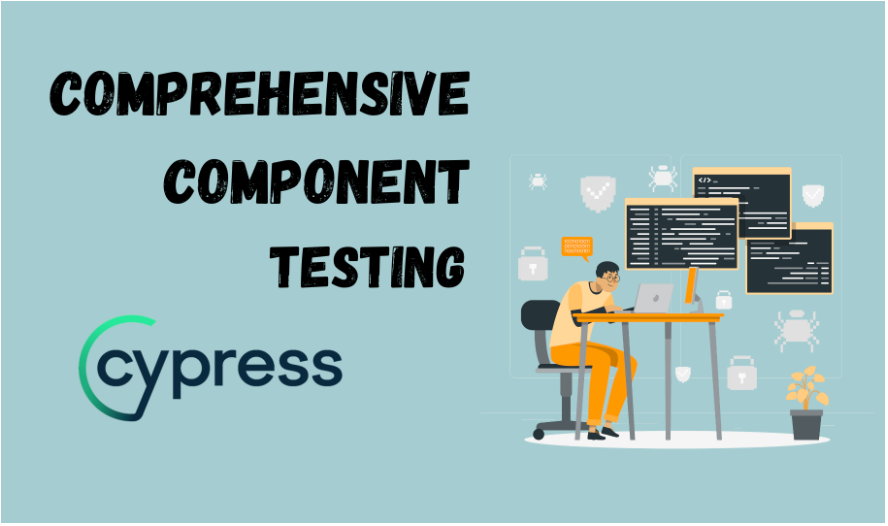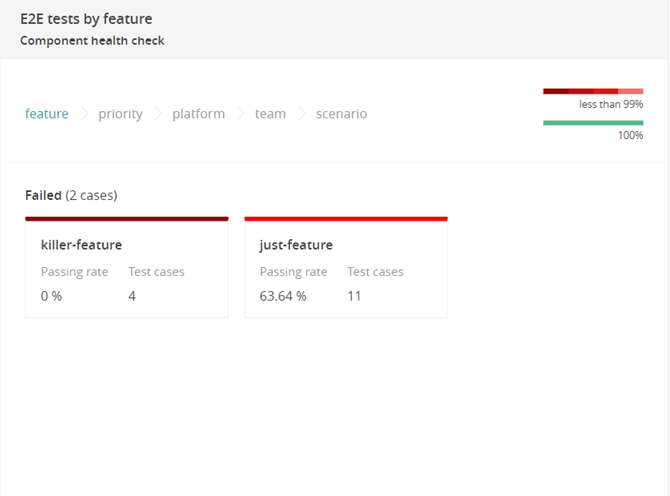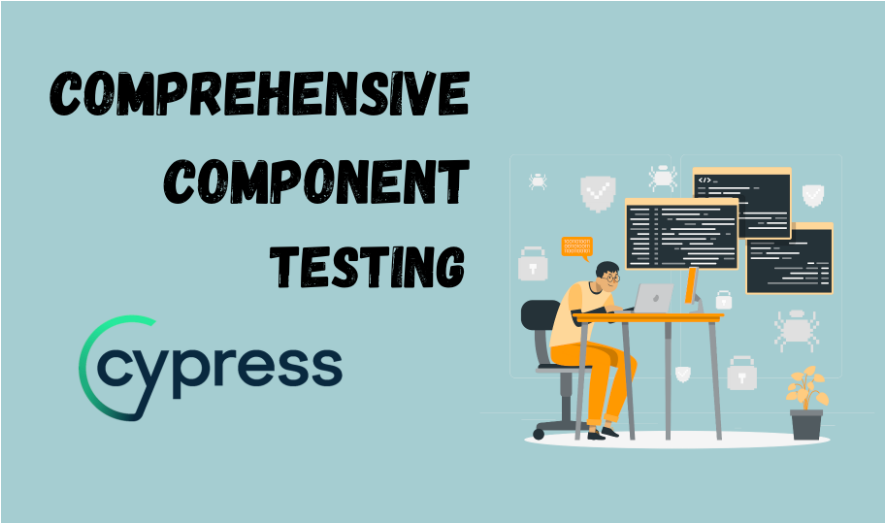In the fast-paced world of web development, ensuring application quality and reliability is paramount. As frameworks like React, Next.js, and Remix enable us to build increasingly complex and interactive user experiences, the need for a robust testing strategy has never been more critical. While unit tests with tools like Jest provide a solid foundation, they can’t fully capture the user’s journey. This is where end-to-end (E2E) testing shines, and for years, Cypress has been a leading force in this domain. The latest Cypress News isn’t just about E2E anymore; it’s about a holistic approach that integrates seamless component testing directly into the developer workflow.
This article dives deep into the modern Cypress ecosystem. We’ll explore its core concepts, from setting up your first E2E test to mastering advanced techniques like network interception and custom commands. We will also cover the groundbreaking shift towards component testing, demonstrating how Cypress helps you build more resilient applications faster. Whether you’re working with the latest React News, managing state with Zustand News, or building forms with React Hook Form News, you’ll gain actionable insights to elevate your testing game and deliver flawless user experiences.
The Core of Cypress: Setting Up and Writing Your First Tests
Cypress distinguishes itself with a developer-first philosophy. Unlike other testing frameworks that run outside the browser and execute remote commands, Cypress runs directly in the same run loop as your application. This architectural choice provides unparalleled control, visibility, and reliability, making tests easier to write, run, and debug.
Installation and Project Setup
Getting started with Cypress is remarkably straightforward. You can add it to any modern JavaScript project, whether it’s built with Vite News, Create React App, or a meta-framework like Next.js News or Gatsby News. First, install it as a development dependency:
npm install cypress --save-devOnce installed, you open the Cypress Test Runner for the first time using the npx command:
npx cypress openThis command scaffolds a complete configuration for you. It creates a cypress directory with subfolders for fixtures, support files, and your test files (specs), along with a central cypress.config.js file. This configuration file is where you’ll define your base URL, viewport settings, and configure either E2E or component testing.
Writing a Basic End-to-End Test
Let’s imagine we’re testing a simple news dashboard application. Our first goal is to ensure the main page loads correctly and displays the primary headline. Cypress tests are written in a clear, chainable, BDD-style syntax that is highly readable.
Here’s a basic test that visits the homepage, finds an h1 element, and asserts that it contains the expected text.
// cypress/e2e/smoke-test.cy.js
describe('Application Smoke Test', () => {
it('should load the homepage and display the main headline', () => {
// 1. Visit the application's base URL
cy.visit('/');
// 2. Find the main heading element using its selector
// and assert that it is visible and contains the correct text.
cy.get('h1')
.should('be.visible')
.and('contain', 'Latest Community News');
});
it('should navigate to the about page when the link is clicked', () => {
cy.visit('/');
// Find a link containing "About Us" and click it
cy.contains('a', 'About Us').click();
// Assert that the URL has changed to the about page
cy.url().should('include', '/about');
// Assert that the about page has the correct heading
cy.get('h1').should('contain', 'About Our Mission');
});
});This simple example showcases the core Cypress commands: cy.visit() to navigate, cy.get() or cy.contains() to select elements, and .should() to make powerful assertions. The real magic happens in the Cypress Test Runner, which provides an interactive UI to see your commands execute in real-time, inspect the DOM at any point (time-travel), and debug failures visually. This is a significant advantage when comparing the developer experience in the Cypress News vs. Playwright News debate.
Beyond the Basics: Advanced Interactions and Assertions

Modern web applications are highly dynamic, relying on user input, asynchronous data fetching, and complex state management. A robust testing strategy must account for this complexity. Cypress provides powerful tools to handle these scenarios gracefully.
Handling Asynchronous Operations with Network Interception
One of the most common challenges in E2E testing is dealing with network requests. Tests can become flaky if they depend on a live backend that might be slow or unavailable. Cypress solves this with cy.intercept(), a command that allows you to spy on, stub, or modify network requests and responses.
Imagine a page that fetches a list of articles from an API. We can intercept this request to provide a consistent, mock response, ensuring our test is fast, reliable, and independent of the backend. This is crucial when testing components that use data-fetching libraries like React Query News, Apollo Client News, or Urql News.
// cypress/e2e/articles.cy.js
describe('Articles Dashboard', () => {
beforeEach(() => {
// Intercept the GET request to the articles API
// and respond with a mock data from a fixture file.
cy.intercept('GET', '/api/articles', { fixture: 'articles.json' }).as('getArticles');
// Visit the page after setting up the intercept
cy.visit('/articles');
});
it('should display a list of articles from the API', () => {
// Wait for the intercepted request to complete
cy.wait('@getArticles');
// Assert that the list contains the expected number of items
cy.get('.article-list-item').should('have.length', 3);
// Assert that the first article has the correct title from our fixture
cy.get('.article-list-item')
.first()
.should('contain', 'The Future of RedwoodJS');
});
});In this example, cy.intercept() catches any GET request to /api/articles and forces it to respond with the contents of cypress/fixtures/articles.json. The .as('getArticles') alias allows us to explicitly cy.wait() for that request to resolve before making assertions, eliminating any race conditions.
Custom Commands for DRY (Don’t Repeat Yourself) Tests
As your test suite grows, you’ll find yourself repeating certain sequences of actions, such as logging in a user. Cypress allows you to create custom commands to abstract these repetitive tasks into a single, reusable function.
You can add custom commands in the cypress/support/commands.js file:
// cypress/support/commands.js
Cypress.Commands.add('login', (username, password) => {
cy.visit('/login');
cy.get('input[name="username"]').type(username);
cy.get('input[name="password"]').type(password);
cy.get('button[type="submit"]').click();
cy.url().should('not.include', '/login');
});Now, in any test file, you can simply call cy.login('testuser', 'password123') to perform the entire login flow. This makes your tests cleaner, more readable, and much easier to maintain.
Component Testing: The Modern Frontier in Cypress News
Perhaps the most significant evolution in recent Cypress News is its first-class support for component testing. This feature blurs the line between traditional unit testing tools like Jest News and React Testing Library News and full E2E testing, offering a powerful middle ground.
Shifting Left: Why Component Testing Matters
Component testing allows you to mount a single React, Vue, or Svelte component in isolation, directly in a real browser. This provides several key advantages:
- Speed: It’s significantly faster than a full E2E test because you don’t need to boot your entire application and navigate through multiple pages.
- Isolation: You can test a component’s variations and edge cases without worrying about the state of the rest of the application.
- Realism: Unlike JSDOM-based tools, your component is rendered in an actual browser, so you can test its visual appearance, styling, and interactions with pixel-perfect accuracy.
This approach is perfect for developing and testing UI libraries like Storybook News components or complex, interactive pieces of your application, such as a data visualization built with Recharts News or an animation powered by Framer Motion News.

A Practical Component Test Example
Setting up component testing in a React News project is a guided process initiated from the Cypress runner. Once configured, you can write tests that feel very similar to E2E tests but use a mount command instead of cy.visit().
Let’s test a simple `UserProfileCard` component that takes props and handles a click event.
// src/components/UserProfileCard.cy.jsx
import React from 'react';
import { mount } from 'cypress/react18';
import UserProfileCard from './UserProfileCard';
describe('<UserProfileCard />', () => {
it('renders user information and handles clicks', () => {
// Create a spy function to track the onClick event
const onClickSpy = cy.spy().as('onClickSpy');
// Mount the component with specific props
mount(
<UserProfileCard
name="Jane Doe"
title="Community Organizer"
onSelect={onClickSpy}
/>
);
// Assert that the props are rendered correctly
cy.get('[data-cy="user-name"]').should('contain', 'Jane Doe');
cy.get('[data-cy="user-title"]').should('contain', 'Community Organizer');
// Simulate a user click on the card's button
cy.get('button').contains('View Details').click();
// Assert that our spy function was called
cy.get('@onClickSpy').should('have.been.calledOnce');
});
});This test mounts the component in isolation, verifies its rendered output based on the provided props, and confirms that its event handler is called correctly upon interaction. This tight feedback loop is invaluable for modern component-driven development.
Best Practices for Scalable and Maintainable Cypress Tests
Writing tests is one thing; maintaining a large, healthy test suite is another. Following best practices is crucial for long-term success.
Test Isolation and Data Management
A cardinal rule of testing is that tests should be independent and able to run in any order. Never have one test depend on the state created by a previous one. Use `beforeEach` hooks to ensure a clean state before every `it` block runs. For data setup, avoid using the UI to create state (e.g., filling out a form to create a user before testing the user’s profile page). Instead, use programmatic methods:

cy.request(): Make direct API calls to your backend to seed data.cy.exec(): Run local scripts or command-line tools to reset the database.cy.task(): Execute Node.js code in your `cypress.config.js` file for tasks that can’t be done in the browser.
Integration with CI/CD Pipelines
Cypress is designed for automation. To run your tests in a Continuous Integration (CI) environment like GitHub Actions or Jenkins, you use the `cypress run` command. This executes all tests headlessly (without the interactive UI) and provides a detailed summary in the terminal.
For enhanced capabilities, the Cypress Cloud (formerly Dashboard) service offers test parallelization, video recordings of test runs, detailed error analysis with screenshots, and flake detection. This service transforms Cypress from just a testing tool into a comprehensive quality assurance platform.
Cypress in the Broader Testing Landscape
While Cypress is a powerhouse for web applications, it’s important to know its scope. For testing native mobile applications built with React Native News, a dedicated tool like Detox News is the appropriate choice. Cypress excels at testing anything that runs in a web browser, including PWAs and webviews inside native apps, but not native UI components from libraries like React Native Paper News or NativeBase News.
Conclusion: The Future of Testing is Integrated
The latest Cypress News paints a clear picture: the future of application testing is integrated, developer-friendly, and versatile. By combining best-in-class E2E testing with a powerful component testing workflow, Cypress empowers teams to build with confidence. Its interactive Test Runner, automatic waiting, and robust API for handling modern web complexities make it an indispensable tool for any project built with frameworks like React News, Next.js News, or even emerging ones like Blitz.js News.
By adopting the practices outlined in this article—from writing clean, isolated tests to leveraging network interception and component testing—you can create a resilient, maintainable, and highly effective testing suite. As you continue to build, let Cypress be your trusted partner in ensuring that every feature you ship is of the highest quality, providing a seamless and bug-free experience for your users.












